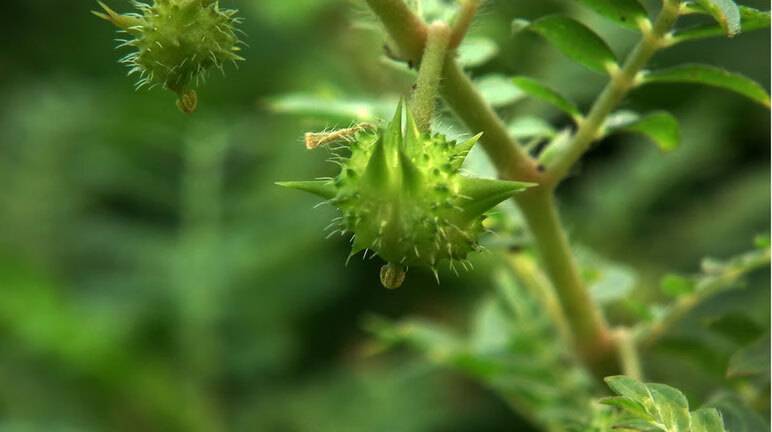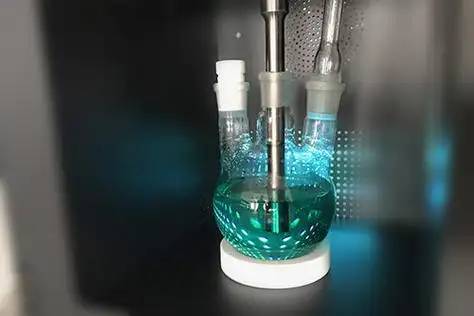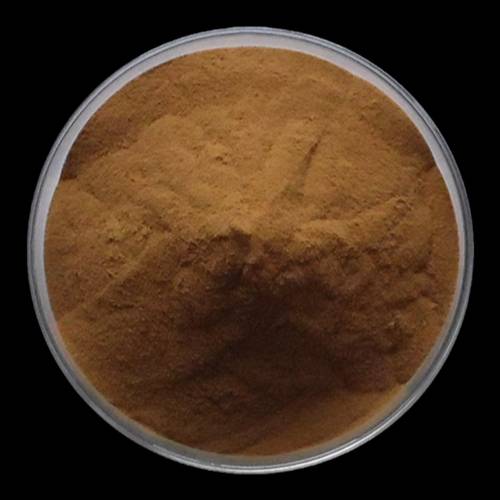Highly Active & Standardized Tribulus Terrestris Extract by Green Spring Technology
When developing functional products centered on Tribulus terrestris, do insufficient active concentrations and batch-to-batch variability in raw materials pose common challenges for you?
With deep insight into this pain point, Green Spring Technology has built an integrated solution from extraction to quality control, focusing on the core active component of Tribulus terrestris—total saponins:
✨ Precision extraction for guaranteed high potency: Our optimized extraction process focuses on efficiently enriching saponin components, ensuring stable and superior bioactivity in the raw material。
✨ Stringent quality control for standardized consistency: Through a scientific analytical testing system, we conduct multidimensional quality verification on every batch, effectively guaranteeing product uniformity and reliability.
Green Spring Technology is dedicated to transforming the medicinal value of traditional Tribulus terrestris into standardized, high-purity, traceable modern botanical ingredients. Choosing us means gaining not only premium Tribulus terrestris extracts but also scientific validation of product efficacy and a long-term commitment to consistent quality.

1 Green Spring Technology: Ensuring High Activity and High Standards for Tribulus Terrestris Extract
The extraction process for total tribulus saponins directly determines the final raw material's active purity and quality stability. Green Spring Technology has thoroughly researched mainstream extraction techniques and optimized the most suitable production pathway for high-quality Tribulus terrestris extracts based on industrial feasibility and efficiency.
Currently, extraction methods in the industry can be broadly categorized into three types: traditional solvent extraction, microwave-assisted extraction, and ultrasonic-assisted extraction. Green Spring Technology has conducted comprehensive evaluations and innovative optimizations of different processes to select the most efficient and stable production solutions for our clients.
1.1 Optimizing Traditional Processes: Balancing Efficiency and Cost
Traditional solvent extraction (e.g., reflux extraction) forms the industry foundation. Through scientific methods like orthogonal experiments, Green Spring Technology systematically optimizes critical parameters—including ethanol concentration, extraction time, and temperature. This ensures high extraction rates (up to 80%+) while significantly enhancing process stability and controllability, making it a reliable choice for large-scale, standardized production.
1.2Integration of Modern Technologies: Pursuing Breakthroughs in Efficiency and Activity
To achieve higher extraction efficiency and better preserve saponin activity, Green Spring Technology actively integrates modern extraction techniques:
⭐ Microwave Extraction Technology
Utilizes microwave energy to rapidly break cell walls at the cellular level, reducing extraction time from hours to minutes. This significantly enhances production efficiency while preserving heat-sensitive components.
⭐ Ultrasonic Extraction Technology
Accelerates the dissolution of active components through cavitation effects generated by ultrasonic waves, enhancing extraction rates and shortening production cycles without compromising saponin structure.
Green Spring Technology's Process Selection: Unbound by Technology, Dedicated to Quality
Green Spring Technology does not rely on a single technology. Still, it flexibly applies or combines the above processes based on clients' specific requirements for raw material activity, cost, and production scale. Our core objective remains unwavering: through precise process control and continuous technological optimization, we ensure every batch of Tribulus terrestris extract shipped maintains high total saponin content (typically exceeding 50%) and exceptional batch consistency.

2 Green Spring Technology Ensures Standardization and Traceability of Tribulus Terrestris Saponin Ingredient
For raw material suppliers, precise analytical testing is not only the foundation of R&D but also the core guarantee for product quality standardization and batch-to-batch consistency. Green Spring Technology employs internationally recognized advanced analytical techniques to establish a rigorous quality control system, ensuring the active ingredient content of every batch of Tribulus terrestris extract raw material is precisely controllable and traceable.
Currently, diverse analytical methods exist for total saponins in Tribulus terrestris within the industry. Based on a deep understanding of the strengths and limitations of different techniques, Green Spring Technology has developed a multi-tiered, cross-validated quality control testing protocol.
2.1 UV-Vis Spectrophotometry: An Efficient Quality Control Tool
This method, valued for its simplicity, speed, and low cost, is commonly used for rapid screening and internal control during production. By optimizing colorimetric reaction conditions and measurement wavelengths, Green Spring Technology ensures this method reliably and sensitively reflects trends in total saponin content. It provides real-time data support for production process adjustments, serving as a crucial component in maintaining foundational product quality stability.
2.2 High-Performance Liquid Chromatography (HPLC)
To achieve high standards and precise quantification, Green Spring Technology employs High-Performance Liquid Chromatography (HPLC) as its core quality control method. HPLC offers high separation efficiency, sensitivity, and reliable results, enabling accurate determination of key saponin monomers (e.g., diosgenin) in Tribulus terrestris. We employ this method to establish authoritative Certificates of Analysis (CoA), providing customers with precise active ingredient data. This ensures you receive raw materials with clearly defined components and content, offering robust assurance for your product formulations.
2.3 Exploration and Application of Cutting-Edge Technologies
Green Spring Technology also closely monitors advancements in cutting-edge analytical technologies such as capillary electrophoresis and paper-based microfluidic chip technology. These techniques hold significant potential for rapid testing, cost control, or field applications. Our ongoing exploration of new technologies reflects our commitment to continuously enhancing quality control standards and efficiency through innovation, ensuring we provide customers with long-term, stable, and reliable raw materials.
Green Spring Technology's Quality Commitment: Data-Driven Standardized Raw Materials
Green Spring Technology deeply understands that reliable analytical data forms the cornerstone of “standardized” raw materials. Therefore, we not only possess advanced testing equipment but have also established a comprehensive quality traceability system. From raw material intake to finished product shipment, all critical quality indicators are fully documented. This ensures every Cnidium monnieri extract leaving our facility meets pre-set high-standard specifications, achieving true quality traceability and data verifiability.
3 Green Spring Technology Delivers High-Efficiency Tribulus Terrestris Extract Solutions
Through rigorous evaluation and integration of multiple processing routes, Green Spring Technology has established a quality system that ensures high activity through efficient extraction and achieves standardization via precision analysis.
Looking ahead, plant extraction technology will inevitably pursue ever-greater refinement. Green Spring Technology will remain at the forefront of innovation, continuously optimizing processes while actively exploring emerging rapid detection technologies—such as capillary electrophoresis and paper-based chips—to integrate them into broader quality control applications. We are committed to delivering raw material solutions that offer enhanced efficiency, optimized costs, and greater data transparency for our clients. Learn more about our one-stop standardized tribulus terrestris extract ingredients solutions.
Our Commitment Extends Beyond the Present:
Green Spring Technology aspires to be your trusted partner. We deliver not only Tribulus Terrestris saponins that meet stringent standards, but also customized support and services rooted in our deep technical expertise.
Take Action Now to Experience the Green Spring Difference:
Contact us to obtain the latest product specifications and authoritative testing reports at helen@greenspringbio.com or WhatsApp: +86 13649243917, or to arrange sample trials.
参照
[1]国立薬局方委員会。ピープルの薬局方'の中国共和国(パートi) [m]。北京:中国医学科学技術出版社、2010年。330.
[2] li baolong, wang kang, zeng wei, et al。研究の進捗状況[j]。『吉林薬学院紀要』2011年32(4):223-225。
【3】白雲傑、劉存芳。ステロイドサポニンの抽出法に関する研究の進展[j]。2015年現代農業科学技術、(15):281-285。
[4] wang xiaoyang, li duowei, ling hu xianwei, et al。直交試験法によるサポニン抽出法の最適化[j]。 ^『仙台市史』第1巻、仙台市、2008年、24-26頁。
【5】曹振彦、魏兵、李斌。粗サポニンの抽出過程に関する研究[j]。^『週刊ファミ通』2015年(平成27年)、74-77頁。
[6] li tl, zhang zw, zhangl,et al. gc-msと結合したマイクロ波を用いた濃縮抽出法による難溶性テロリス中のステロイドサポニンの吸引と測定のための簡便な方法[j]。Joumal 2009年ofseparationscience、32(医疗机関リスト):4167-4175。
[7] xi c, zhang w, hou m, et al。伝統的な中国医学の有効成分の抽出におけるマイクロ波抽出技術の応用。中国医薬産業、2014年、23(3):94-96。
[8] zhang j, wang z . tribulus terrestris l .における全サポニン含有量の決定。chinese journal of clinical pharmacy, 2001, 10(4): 244-246。
【9】張娟、呂金才。サポニンの抽出法および含有量決定に関する研究[j]。^ a b c de f g h『現代医学』、2006年、8(3):25-28。
[10] li yan, hu rong, wang lijing, et al。サポニンの全含有量の決定に関する研究tribulus terrestris l . [j]。江西大学漢方医学誌,2014,26(1):59-61。
-
Prev
Loquat Leaf Extract 10% Corosolic Acid Fuels Innovations in Wellness Formula
-
次
Standardized Tribulus Terrestris Extract Flavonoids Offer a Natural Antioxidant Solution


 英語
英語 フランス
フランス スペイン
スペイン ロシア
ロシア 韓国
韓国 日本
日本




